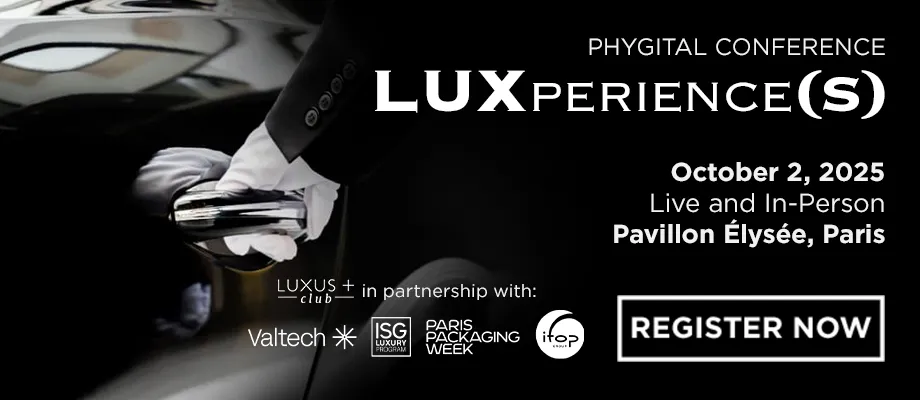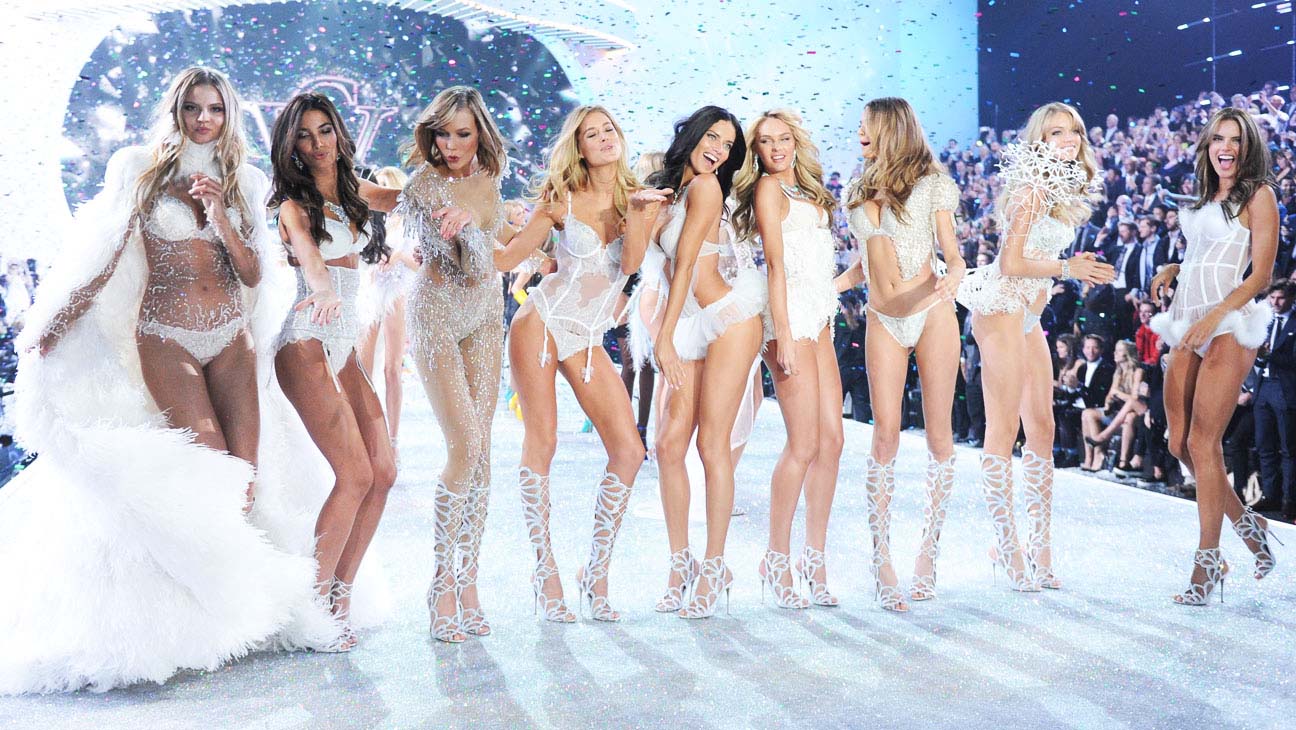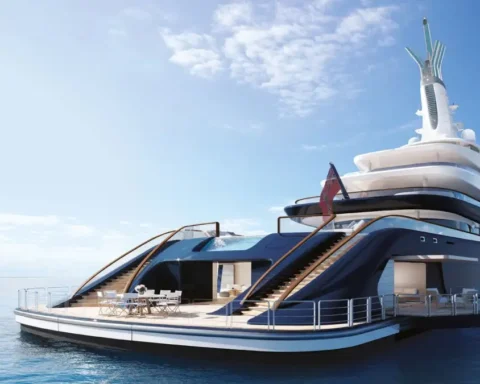The Victoria’s Secret Fashion Show returns on October 15 after a six-year absence, amid a series of scandals, contemptuous comments from marketing management and toxic working conditions. The brand has high hopes for this event, which will enable it to reappear in a better light and present a sexy image that is less inaccessible and more inclusive.
To look at Victoria’s Secret (VS) is to examine a mass-market-oriented brand that has conquered an image of prestige by introducing a catwalk format that did not exist in the lingerie sector when it was first launched.
On the A side, VS democratized the fashion show and, more generally, helped change the public’s perception of lingerie.
On the B side, the lingerie brand not only created an aspirational image of seduction and self-confidence. It has also conveyed unrealistic beauty canons, particularly via its caste of Angels, and underestimated societal evolutions as well as issues of mental well-being.
To analyze Victoria Secret’s greatness, decadence and rebirth is to discover that nothing, and certainly not desirability, is eternal… It can be eroded if the brand doesn’t question itself and take account of the times, or if it surrounds itself with the wrong people.
In a sign of the times, the fashion show inaugurated in 1995 at New York’s Plaza Hotel will be streamed for the first time on October 15, 2024 on Amazon Live and Amazon Prime Video, in addition to a live broadcast on the American label’s Instagram, TikTok and Youtube accounts. Victoria Secret had not paraded since December 2018, following a series of scandals.
A fantasized experience
Victoria’s Secret didn’t become what it is overnight.
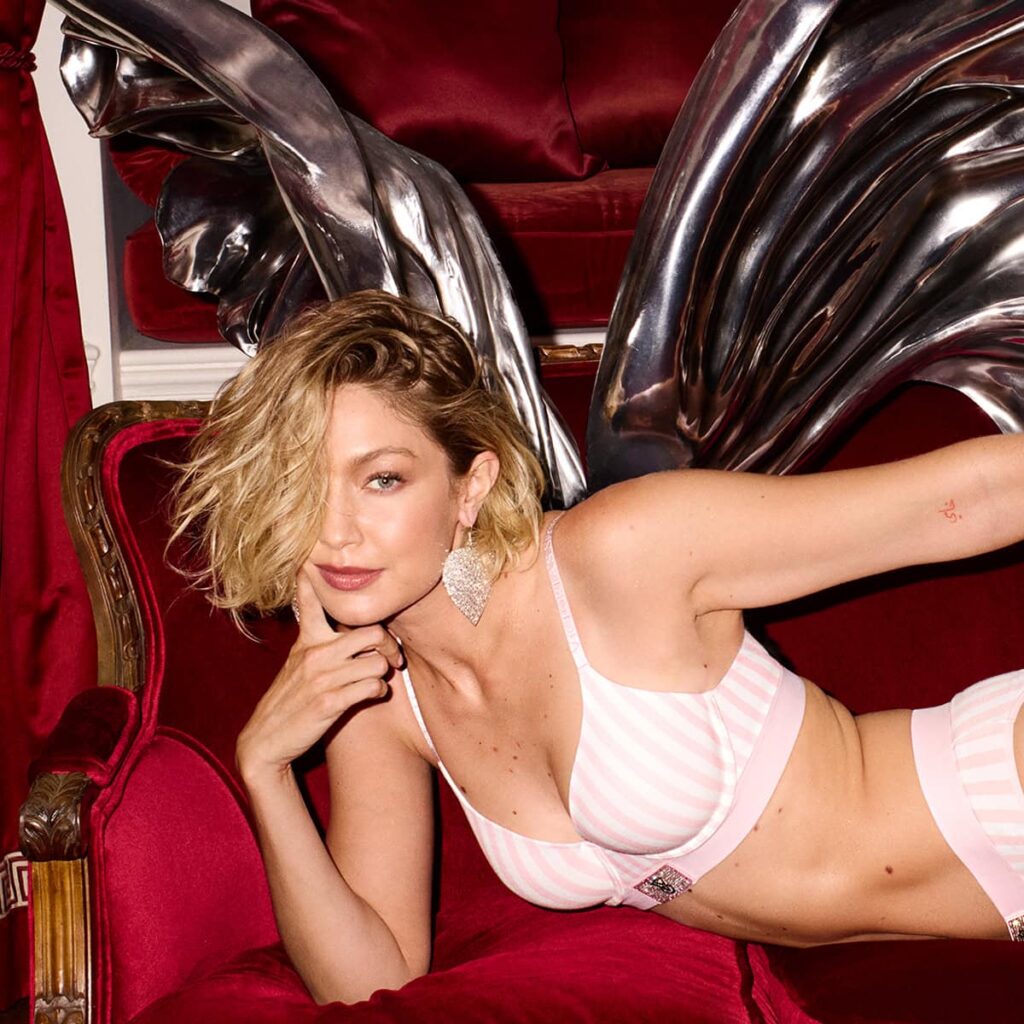
The brand was the brainchild of Roy Raymond, a Californian golden boy in 1977, who was disappointed by a bad experience buying lingerie for his wife in a Palo Alto shopping mall. His idea was to offer a more attractive product range and, above all, a setting where men wouldn’t feel like perverts. Although he is presented as the sole founder, it is more than likely that his wife Gaye was the cofounder – invisibilized – of the Victoria Secret project. The name was conceived as a tribute to the refined boudoir spirit of the Victorian era.
Its luxurious, sensual aesthetic stood out in an American lingerie market then characterized by practical, entry-level items and dominated by Hanes and Fruit of The Loom. What’s more, in the 1970s, lingerie was still mainly distributed by niche boutiques such as Frederick’s of Hollywood, because of its connotations with special occasions such as honeymoons.
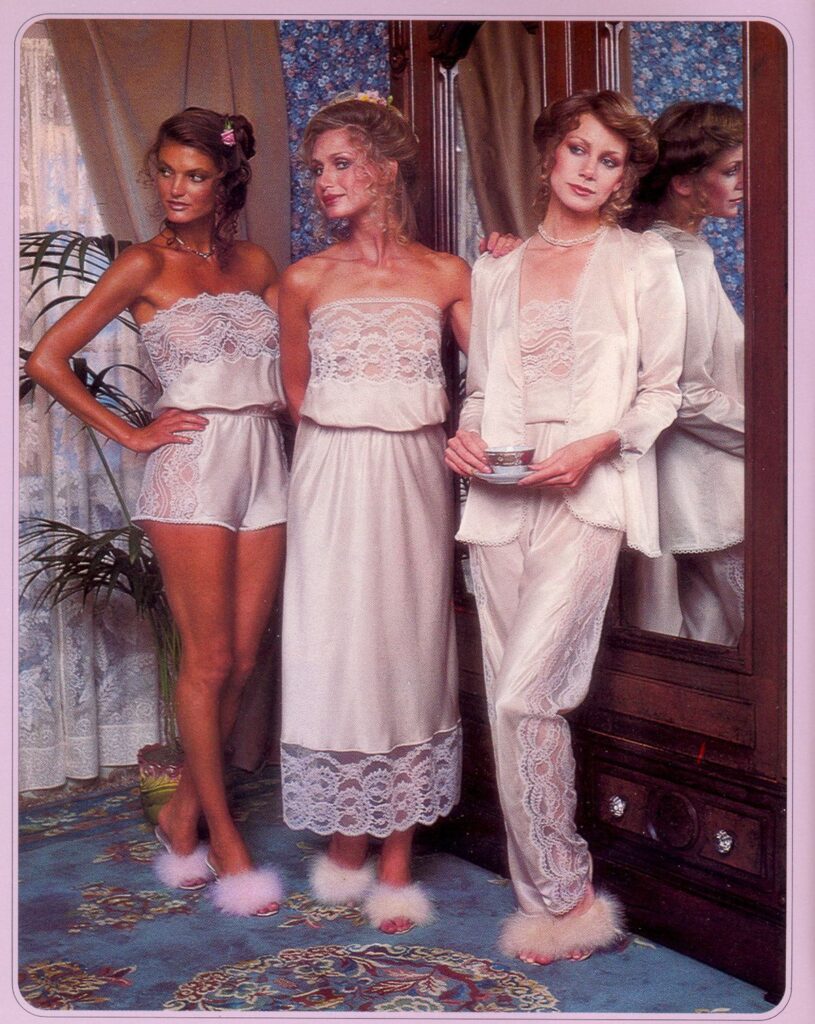
Roy Raymond obtained a $40,000 bank loan and another $40,000 from his in-laws, enabling him to open his first store. The store made a $500,000 profit in its inaugural year, encouraging the entrepreneur to open three more stores and launch a mail-order catalog. Commercial success was the order of the day. But massive investment in store development brought the brand to the brink of bankruptcy in the early 1980s.
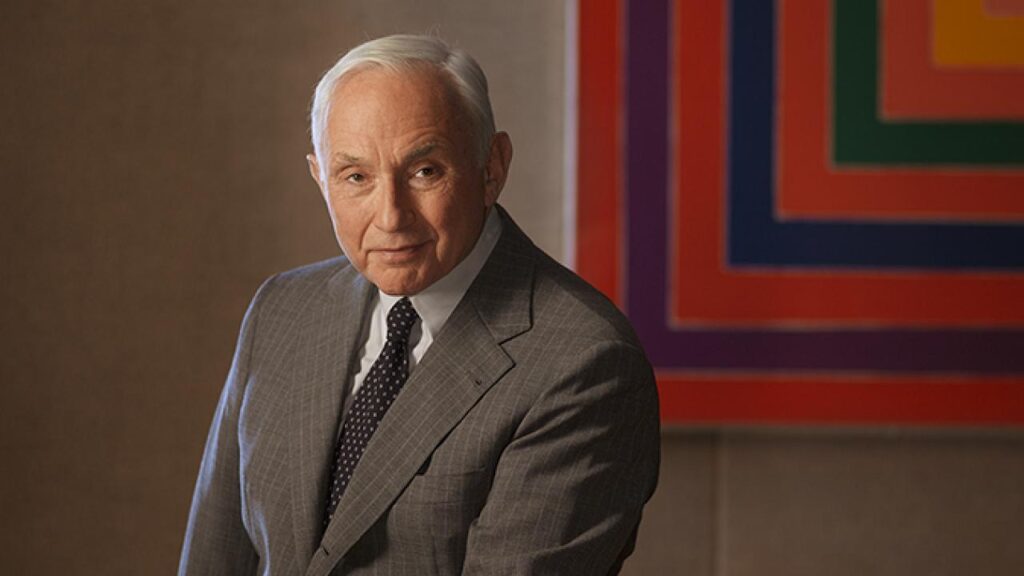
In 1982, Roy Raymond sold his brand for $ 1 million to Les Wexner, an Ohio-born distributor and founder and president of the women’s clothing chain The Limited (later L Brands, parent company of VS and Abercrombie & Fitch).
A fashion show… for a global aura
With Victoria’s Secret, Les Wexner sets out to conquer American shopping malls. According to the CEO of The Limited, the idea is to rethink the concept of boutiques, creating “a paradise for women”. In what is conceived as a temple of femininity, boldly patterned bras and brightly colored lingerie pieces are presented in a setting with bright pink walls. Wexner declares, “If men like Victoria’s Secret, that’s still a bonus, but in my opinion, they should feel uncomfortable in the store.”
To expand, the brand decided to relocate production to China and draw inspiration from Europe’s leading lingerie brands… recipes it replicated at lower cost. Faced with growing competition, the brand’s marketing director, Ed Razek, had another idea, more avant-garde for the lingerie world of the time: to create a fashion show at a time when celebrity marketing was beginning to emerge.
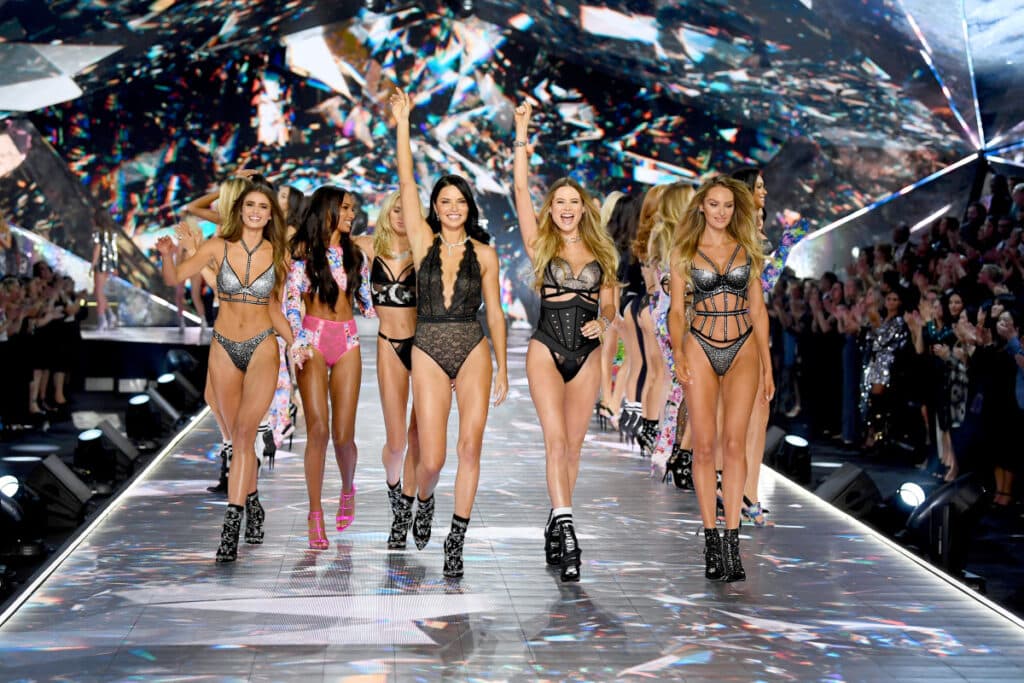
Before appearing in London, Los Angeles, Miami and Cannes, Razek ‘s beginnings were modest, with a first show at New York’s Plaza Hotel in August 1995. Periodicity was not yet established, so much so thatbefore being scheduled in advance of the end-of-year shopping season, the show was first held on Valentine’s Day. To establish its legitimacy in the fashion sphere and become a must-attend event, Victoria’s Secret soon called on the most famous models of the moment, the famous Supermodels of the 1990s, including Cindy Crawford, Naomi Campbell and Claudia Schiffer.
Conceived as a veritable spectacle, with a debauchery of lights, colorful costumes and a pop-rock soundtrack, the fashion show features live concerts by the biggest stars, including Taylor Swift, Ed Sheeran, Lady Gaga, Rihanna, Ariana Grande, Justin Timberlake and Usher.

As for Les Anges, before being a title as much contractual as honorary, rewarding a handful of beauty patricians (such as Adriana Lima, Alessandra Ambrosio, Doutzen Kroes and Candice Swanepoel), it all started with a promotional campaign, that of the Angel underwear collection. Karen Mulder was the first to achieve this status in 1996, before being joined by Stephanie Seymour, Daniela Pestova, Helena Christensen and Tyra Banks the following year. In 1998,Tyra Banks became the first Victoria Secret Angel to sport wings, an attribute that has since become inseparable from the title. A year later, Gisele Bündchen and Heidi Klum joined the ranks of the Angels. The program became an annual television event, first broadcast by ABC before being taken over by CBS in 2002, the same year as the launch of the PINK sister line, aimed at teenage girls.
The show ran continuously for 23 years, with the exception of one cancellation in 2004 due to Janet Jacket’s highly criticized Superbowl performance for the indecency of her outfit. A mainstay of television entertainment, the show drew no fewer than 10.3 million viewers in 2011. In addition to broadcasting the show, the Victoria’s Secret Fashion Show receivesextensive media coverage, with the press quickly catching on behind-the-scenes, and interviews with the models and all the technical staff (hairdressers, make-up artists, etc.). But it was the introduction of the $15 million Red Hot Fantasy bra and matching panties on the catwalk in 2000 that really got the brand off the ground.
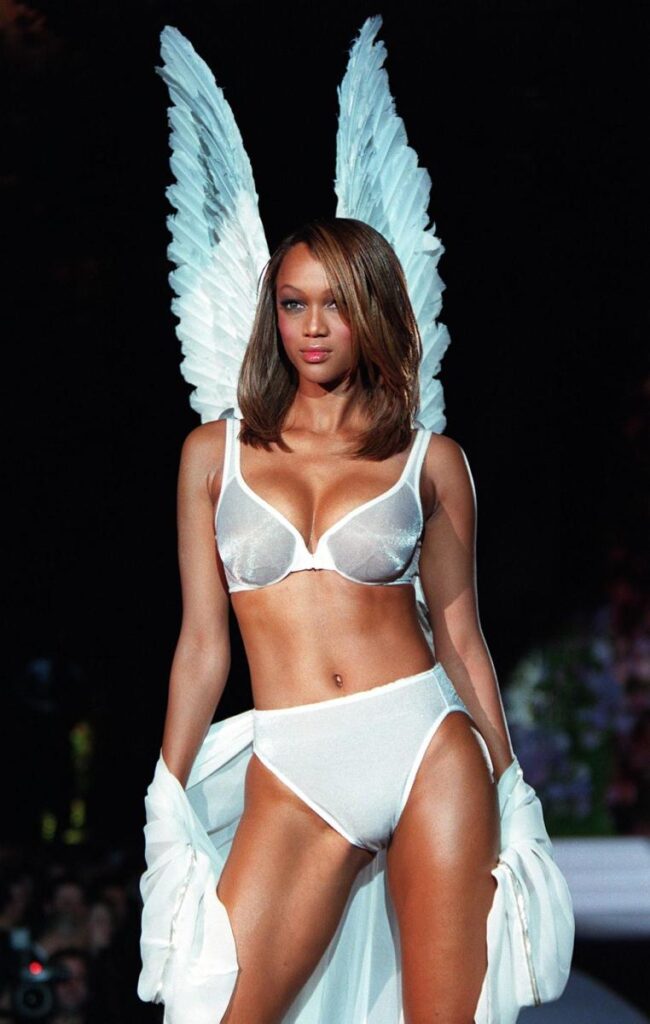
All these initiatives make Victoria Secret the largest lingerie retailer in the United States, with hundreds of stores and sales in excess of $1 billion.
This commercial success did not, however, herald the descent into hell of the program and, by capillary action, of the brand, which failed to see the evolution of body image. Interviewed in 1999, marketing director Ed Razek declared: “To be a Victoria Secret model, you have to have a lot of inner strength, be a very strong woman and a modern, contemporary woman. You have to be beautiful, athletic, healthy, able to move and photogenic.” Little did he know that, by creating a program that denounced the excesses of the perfect-body diktat, he would create challengers much more in tune with the ideas of accessibility and lingerie worn for the self, far removed from the male gaze associated with the brand.
The #MeToo backlash
Les Wexner can rub his hands at the success and commercial impact of the fashion show, which has become a powerful marketing weapon. Little does he know that the worm is in the fruit of his enterprise, through the sulphurous personality of his asset manager. Jeffrey Epstein, a former New York trader he met in the mid-80s, became Les Wexner’s financial advisor at the beginning of the following decade, before becoming his wealth manager.
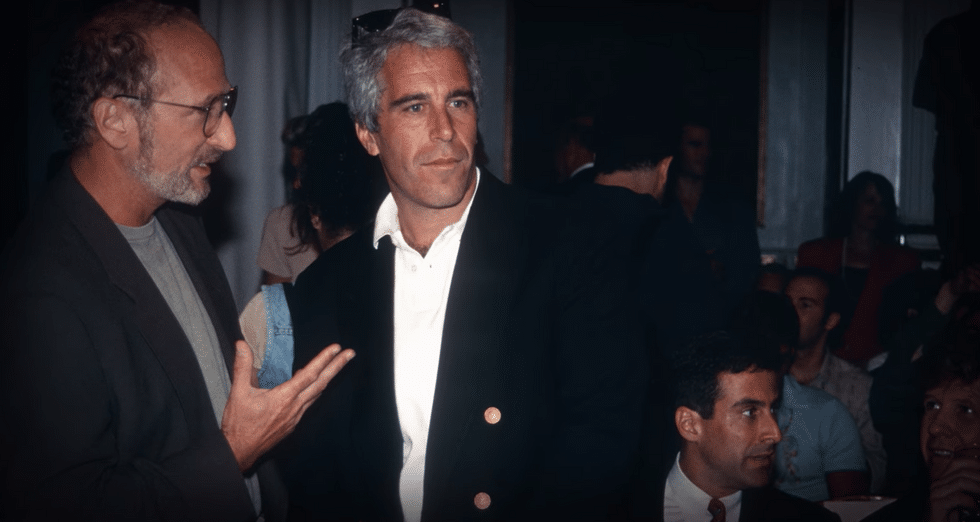
Les Wexner realized too late that he had brought the wolf into the fold, as Jeffrey Epstein not only had access to the lingerie brand, but to twenty companies, 19 trusts and real estate holdings. From the 2000s onwards, the man was implicated in cases of pedophilia and sex trafficking. Leslie Wexner officially cut ties with the promiscuous man in 2007, a year before he was put on the sex offenders list.
The Victoria’s Secret brand also had to deal with a series of bad buzzes around cultural appropriation. Above all, as early as 2014, several voices began to be raised against its lack of inclusivity. This message will enable new brands that take into account the Plus Size morphologies of many customers, such as Aeries and then Savage x Fenty and Skims, to make their mark. Among other things, the company draws the wrath of religious associations such as the American Decency Association and feminist associations such as whatisvictoriassecret.com for its use of “soft pornography” in its ads.
In November 2018, Vogue published an interview with the marketing director that set the world on fire, in which he stated thathe didn’t think transgender models should be in the show, nor that television would be interested in a show featuring plus-size models. Angel Karlie Kloss and fellow Angel Lily Aldridgese challenged the marketing manager on social networks, posting the message “trans and GNC [gender non-conforming] people are not a debate” in a story.
In August 2019, Jeffrey Epstein is arrested in New Jersey by the FBI. Having successfully hushed up previous similar cases, this time he is forced to admit that he is at the head of a particularly elaborate international prostitution ring. In the wake of what becomes known as the Epstein affair, the New York Times publishes a shocking behind-the-scenes investigation of the famous fashion brand. It revealed a toxic work environment and a culture of sexual harassment. We discover that Epstein used his links with Victoria’s Secret to lure and abuse women, including Alicia Arden, accused of sexual assault. And the inappropriate behavior towards the show’s models involved other senior executives, including marketing director Ed Rezak, who was himself linked to Jeffrey Epstein and thus forced to resign a few months later.

It didn’t take much to tarnish the brand’s image. For weeks afterwards, several models spoke out about their working conditions and the horrors of the cult of thinness. As a result, the show was officially cancelled in 2019.
For his part, Les Wexner was forced to step down as President and CEO of L Brands in 2020, due to the controversy surrounding his relationship with his sulphurous friend and protégé Jeffrey Epstein, accentuated by the broadcast of the documentary series Victoria’s Secret: Angels and Demons.
Back in grace?
“We’ve read the comments and we’ve heard you. The Victoria’s Secret Fashion Show is BACK and will reflect who we are today, plus everything you know and love: the glamour, the runway, the wings, the musical entertainment, and more! Stay tuned… it gets more iconic from here,” the brand said last May.
Since the group’s CEO left, Victoria Secrets has taken a series of steps. The company separated from L Brands and went public in August 2021, confirming the transformation of its finances and message. In February 2022, the first model with Down’s syndrome was recruited.
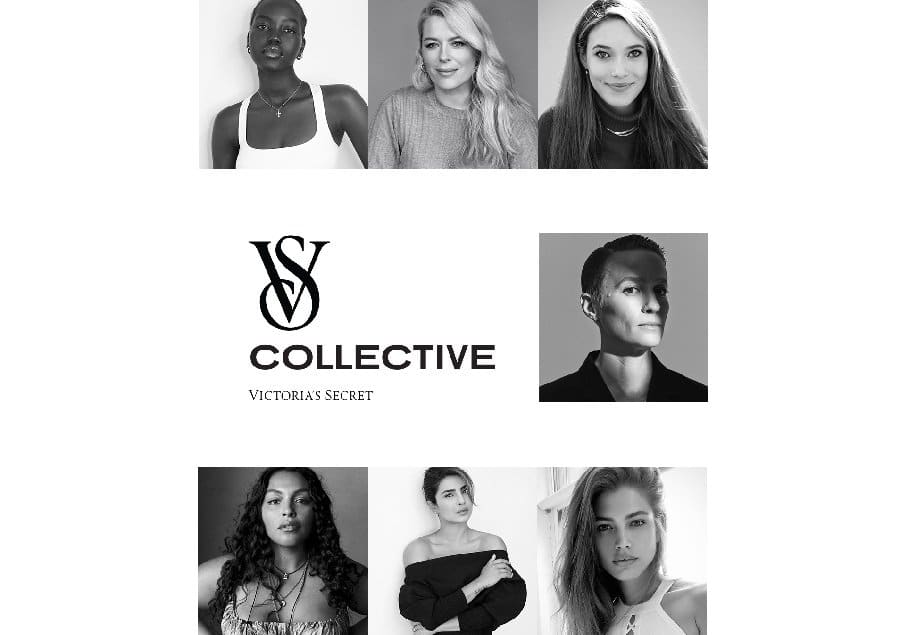
At the same time, Victoria Secret announced that in June 2021, it would transform its criticized fashion show into the VS Collective, a program of ambassadors reflecting a wide diversity of social origins and professions, without, however, succeeding in convincing the public.
In 2023, the label is taking another step to the side with Victoria’s Secret“The Tour ’23 ‘, a ’reinvented” event that has been streamed on Amazon Prime Video. The concept featured a group of 20 creatives who developed four visual concepts in cities such as Bogota, Lagos, London and Tokyo. But here too, the public sanctioned the approach.
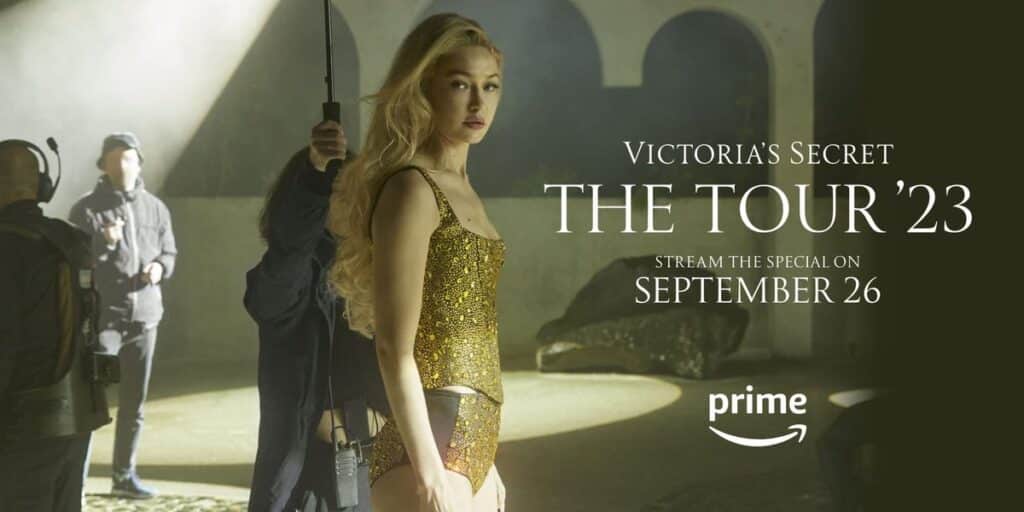
For the 2024 edition, Victoria’s Secret has announced a return to its original fashion show, but with “updates that reflect our values and the brand’s mission today”, declaring that the new fashion show format would be inclusive. “Victoria’s Secret is focused on celebrating and supporting all women, and that won’t be changing anytime soon,” the brand said on its website.
This return of the catwalk, with its micro videos and marketing operations including the show’s best-known Angels such as Candice Swanepoel and Adriana Lima, shows that the format reinforces the position and image of the Victoria’s Secret brand in the eyes of consumers. A CivicScience survey of 3,000 Americans revealed that the brand’s popularity is still very much alive, and that the fashion show remains a boon for the brand. Enough to silence the most skeptical about the show’s future.
Read also > Supermodels: timeless icons before Instagram
Featured Photo: Victoria’s Secret Fashion Show 2013 © Victoria’s Secret

